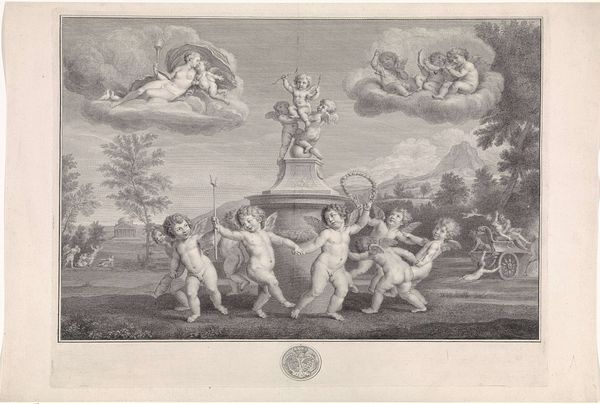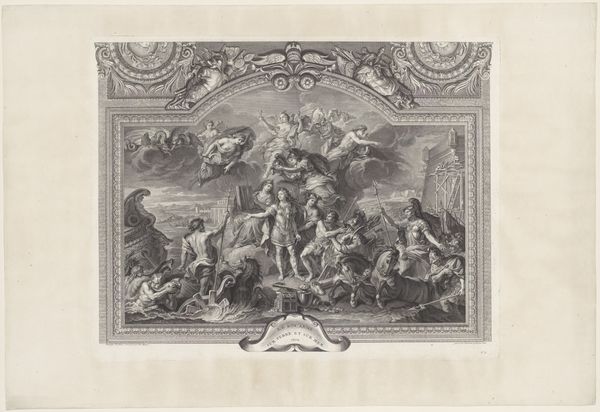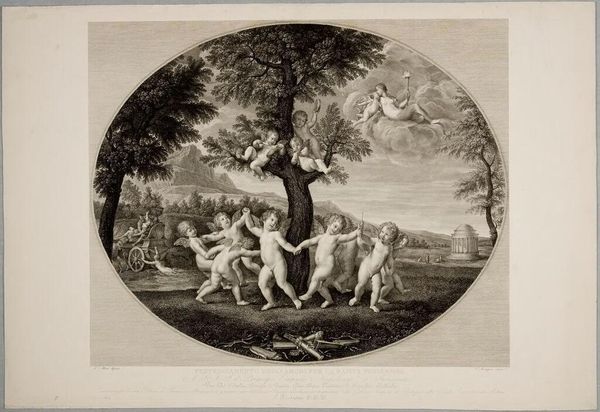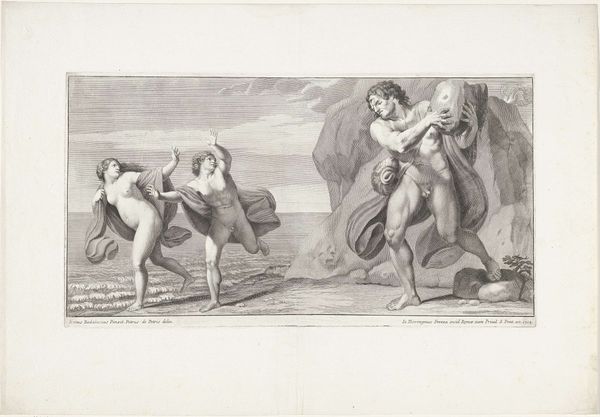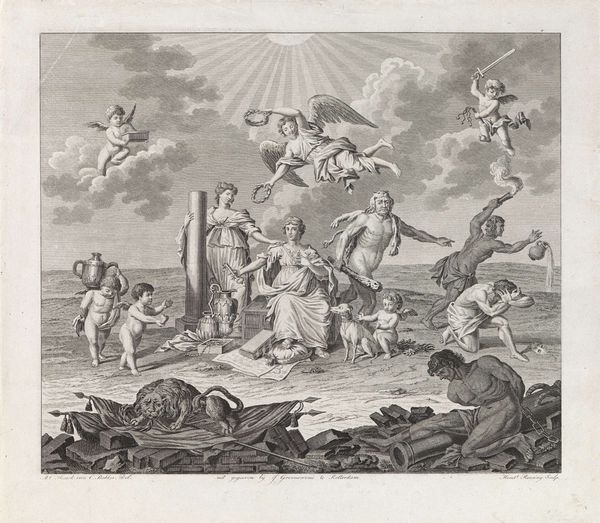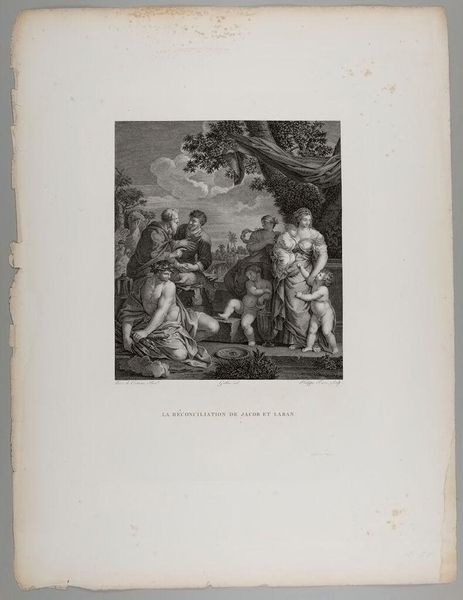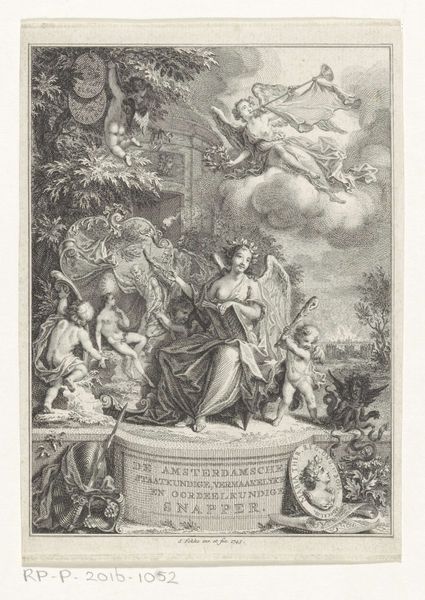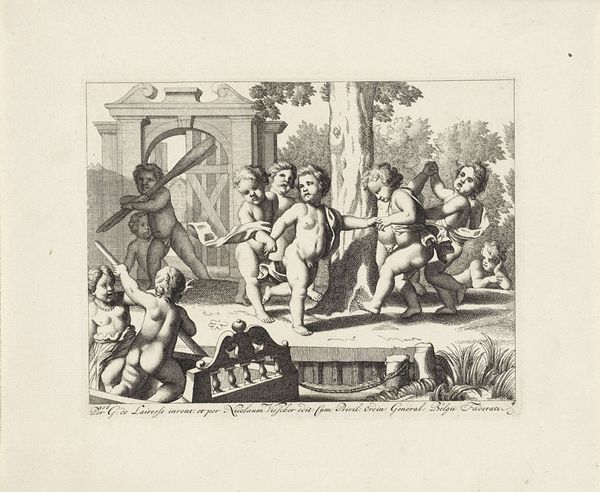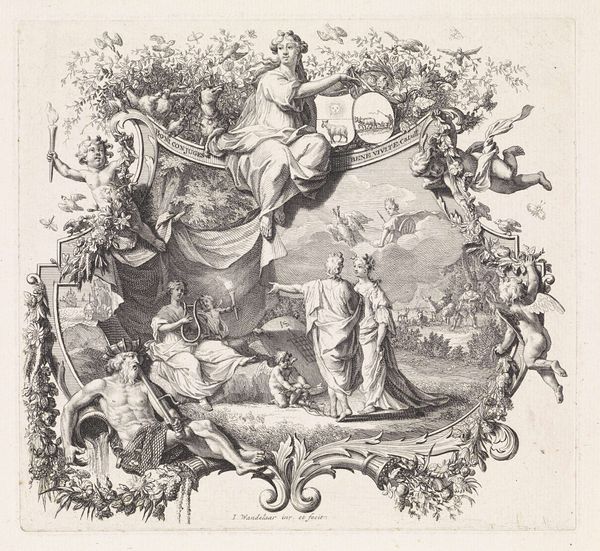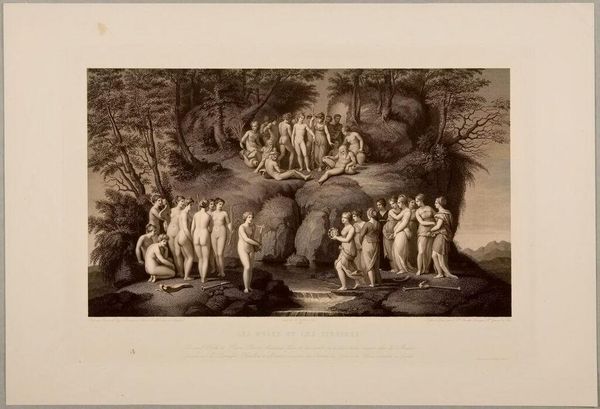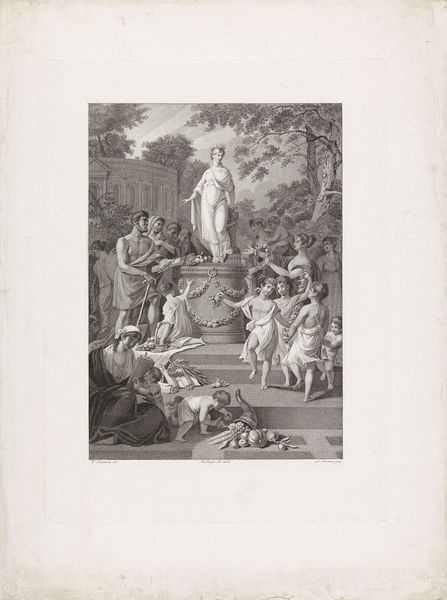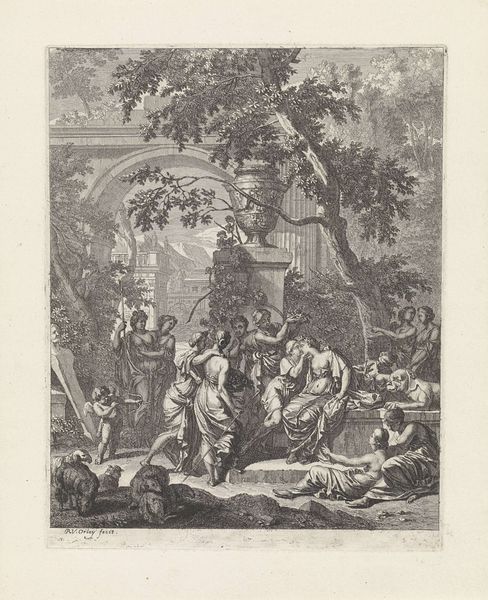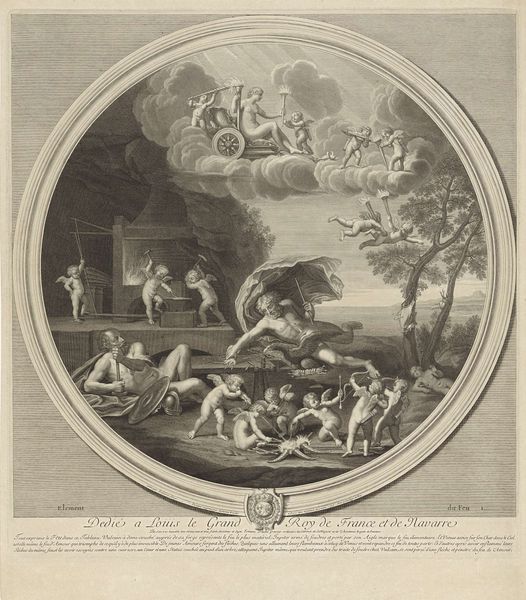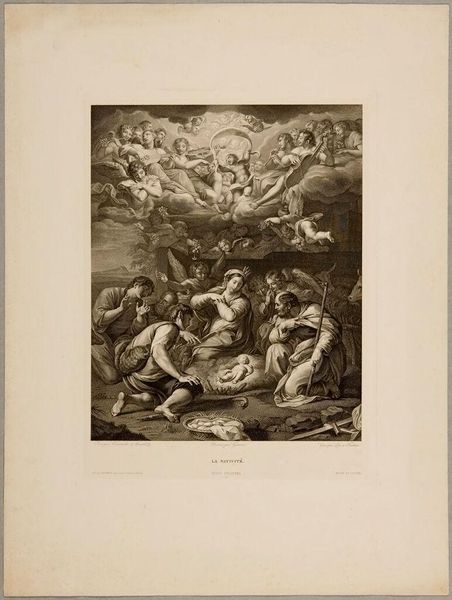
Copyright: CC0 1.0
Curator: Pieter Tanjé's engraving, "Dancing Amoretti, with the Rape of Proserpina," presents a delightful scene. At first glance, it's a whimsical Rococo fantasy. Editor: Whimsical, perhaps, but it feels unsettling too. All those cherubs, some seemingly oblivious to the violence implied above, create a strange juxtaposition. Curator: Indeed, the dancing amoretti ground us in earthly delight, while the myth of Proserpina reminds us of abduction and a loss of innocence. The garland hints at cycle and ritual. Editor: The contrast between the airy figures above and the earthbound ones below is striking. It is like a visualization of innocence and experience, or perhaps the acceptance of violence in plain sight. Curator: That's a valid reading. Tanjé masterfully uses classical symbolism, filtered through a softer, more playful lens, to reveal complex truths. Editor: For me, this print serves as a reminder that pleasure and violence, joy and oppression, can coexist, often masked by beauty and tradition. Curator: I see it as a beautiful and intriguing work, rich with layered meanings that reward contemplation. Editor: And I as a stark reminder of how easily we can become desensitized to pain when it's presented as art.
Comments
No comments
Be the first to comment and join the conversation on the ultimate creative platform.
